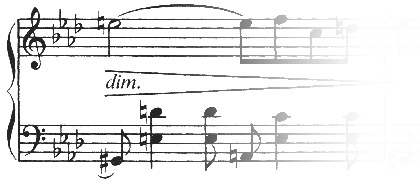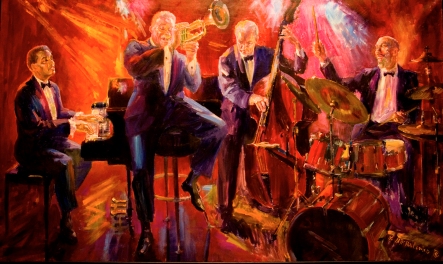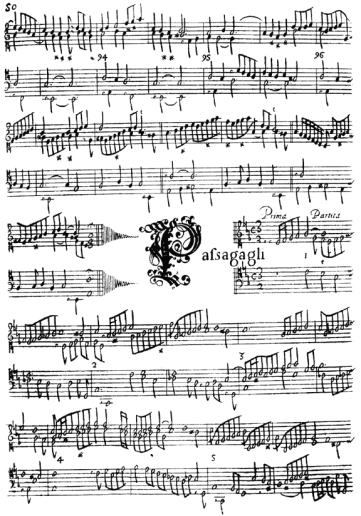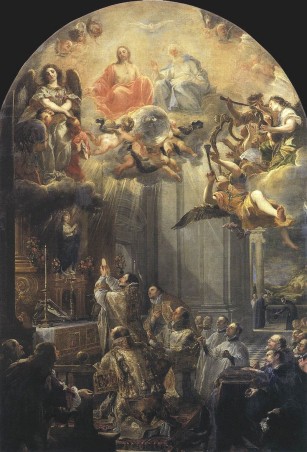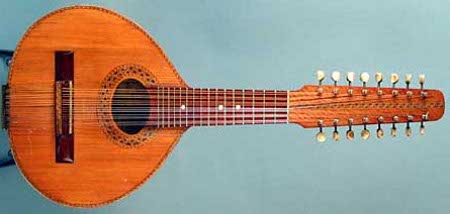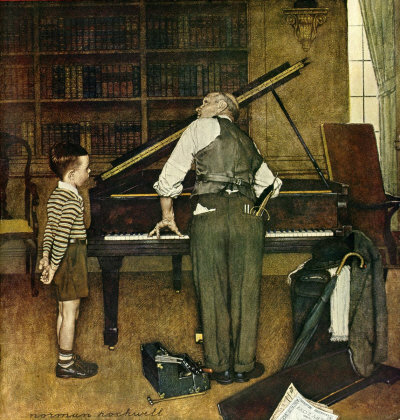Any of several dances, at first in triple meter, but subsequently also in duple meter, thought to derive from early Polish dances [see Polonaise] and popular elsewhere in Europe, especially in Scandinavia, from the 16th century. The Swedish dance of this name is similar in character to the *mazurka.
Monthly Archives: September 2014
nonet
[Fr. nonette; Ger. Nonett; It. nonetto; Sp. noneto]. (1) A composition for nine solo performers. There are relatively few examples. Spohr’s op. 31, for string quartet, double bass, and winds, was the 19th-century model. In the 20th century, Webern, Bax, Milhaud, Villa-Lobos, Piston, Eisler, Gerhard, and Copland wrote for various combinations of nine instruments under various titles. (2) An ensemble of nine solo performers.
diminuendo [It.]
double motet
A *motet in which two different texts are set simultaneously in different voices.
band
[Fr. bande; Ger. Kapelle; It., Sp. banda]. (1) Any instrumental ensemble larger than a chamber ensemble, including, especially in British usage, the orchestra. Early ensembles bearing the name include the 17th-century *Vingt-quatre violons du roi (La grande bande) and the 24 fiddlers of Charles II (The King’s Private Band). (2) An ensemble of wind instruments, sometimes also with percussion. (3) Any ensemble other than one of the traditional combinations of Western art music, sometimes identified by the type of instrument(s) included or by the repertory performed, e.g., accordion band, jazz band, dance band, *big band, *string band, *jug band, *bluegrass band, *rock band. (4) [It.] The brass and percussion sections of the orchestra.
passacaglia
A continuous variation form, principally of the Baroque, whose basso obstinate formulas originally derived from *ritornellos to early 17th-century songs. The passacaglias or ritornellos were played on the guitar between stanzas or at the ends of songs, where they were repeated many times, probably with improvised variations; the practice began in Spain [Sp. pasacalle] and then quickly moved to Italy and France. The passacaglia then developed in a way quite similar to the *chaconne. Its four-bar *ostinato became the basis for long sets of continuous variations as well as vocal pieces (e.g., Frescobaldi, Partite sopra passacagli and Aria di passacaglia). Early differences between chaconne and passacaglia were the particular chord progressions; the passacaglia tended to be in minor, with a I-IV-V or I-IV-V-I pattern. The bass lines themselves might change in successive phrases, or extra harmonies might be inserted, but these variants fell within a limited set of formulas. One of these formulas is the descending tetrachord used in so many operatic laments but appearing as well in pieces titled passacaglia (e.g., Biber, Passacaglia in G minor for solo violin, Mw 11). Bach’s Passacaglia in C minor for organ BWV 582 is perhaps the best-known 18th-century passacaglia and was used as a model by many later composers; its eight-bar obstinate appears in the bass for the first eight and last five variations, but in the ninth through fifteenth it is decorated, ascends in register, and even disappears.
mass
[Fr. messe; Ger. Messe; It., Lat. missa; Sp. misa]. The most important service of the Roman rite, deriving from a ritual commemoration of the Last Supper. The term is taken from the words of dismissal of the congregation at the end of the ceremony (“ite missa est”); an earlier name was eucharistia. By the 7th century, the Mass had developed an elaborate liturgy of chants, prayers, and readings placed before and after the central canon, and a distinction was made between those parts of the liturgy whose texts (and music) were appropriate only to a particular feast (the Proper) and those whose texts (and music) could be used any day (the Ordinary) [see also Liturgy, Gregorian chant, Missa].
bandola [Sp.]
centitone
échelle [Fr.]
Scale.
